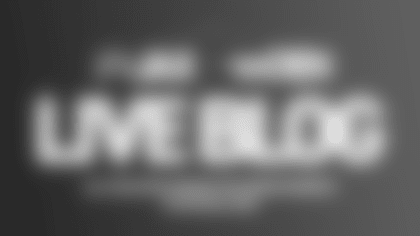The NFL's annual league meetings might have been light on heavy news, but they weren't lacking in productivity.
As expected, instant replay finally graduated from year-to-year experimental status to being locked in place for the next three seasons. Taunting and uniform-code issues were addressed. Minor rules adjustments were made.
Yet if you ask the participants, the biggest accomplishment of the two-and-a-half-day gathering in the desert was the streamlining of realignment plans for the 2002 season, when the Houston Texans begin play as the league's 32nd team.
No votes were taken, but owners and league executives managed to trim a list of more than 30 options to a far more manageable seven.
And what seems to bode well for the future on this very thorny subject is that they got there minus the acrimony present through much of the discussion before the NFL's last realignment 30 years ago.
"We built a level of understanding and willingness to make decisions," Commissioner Paul Tagliabue said.
In most of the proposals being considered to fill eight divisions of four teams each, there are four significant changes: The Arizona Cardinals would move out of the NFC East, the Tampa Bay Buccaneers would depart the NFC Central (which will be renamed the North, as will the AFC Central), the Seattle Seahawks would leave the AFC West for the NFC West, and the Indianapolis Colts would exit the AFC East for the AFC South.
A final decision isn't due until June 1, although the issue could be put to a vote at a May meeting.
The plan that many league and team officials believe has the best chance of receiving the necessary 24 votes for approval is called Option A1.
It has the Dallas Cowboys, New York Giants, Washington Redskins, and Philadelphia Eagles remaining in the NFC East; the Minnesota Vikings, Chicago Bears, Detroit Lions, and Green Bay Packers staying in the NFC North; the Cardinals and Seahawks joining the St. Louis Rams and San Francisco 49ers in the NFC West, and the Bucs, Atlanta Falcons, New Orleans Saints, and Carolina Panthers forming the new NFC South.
In the AFC, the New York Jets, New England Patriots, Miami Dolphins, and Buffalo Bills stay in the East, while the Denver Broncos, Kansas City Chiefs, Oakland Raiders, and San Diego Chargers remain in the West. The Baltimore Ravens, Cincinnati Bengals, Cleveland Browns, and Pittsburgh Steelers would comprise the AFC North, leaving the Colts, Texans, Tennessee Titans, and Jacksonville Jaguars in the South.
"The NFC East and Central and the AFC East and West seem pretty well set," Tagliabue said. "The more difficult decisions are in the others."
More than a few club representatives spoke of "doing whatever is best for the league," and said their personal preferances would not be obstacles in the realignment process.
Some groupings - such as keeping original American Football League franchises Denver, Kansas City, Oakland and San Diego in the AFC West - clearly have more vigorous support than others.
"That sentiment has been quite strong," Tagliabue said. "But people are trying not to be closed-minded."
Which, by itself, is the biggest reason to call these meetings productive.













